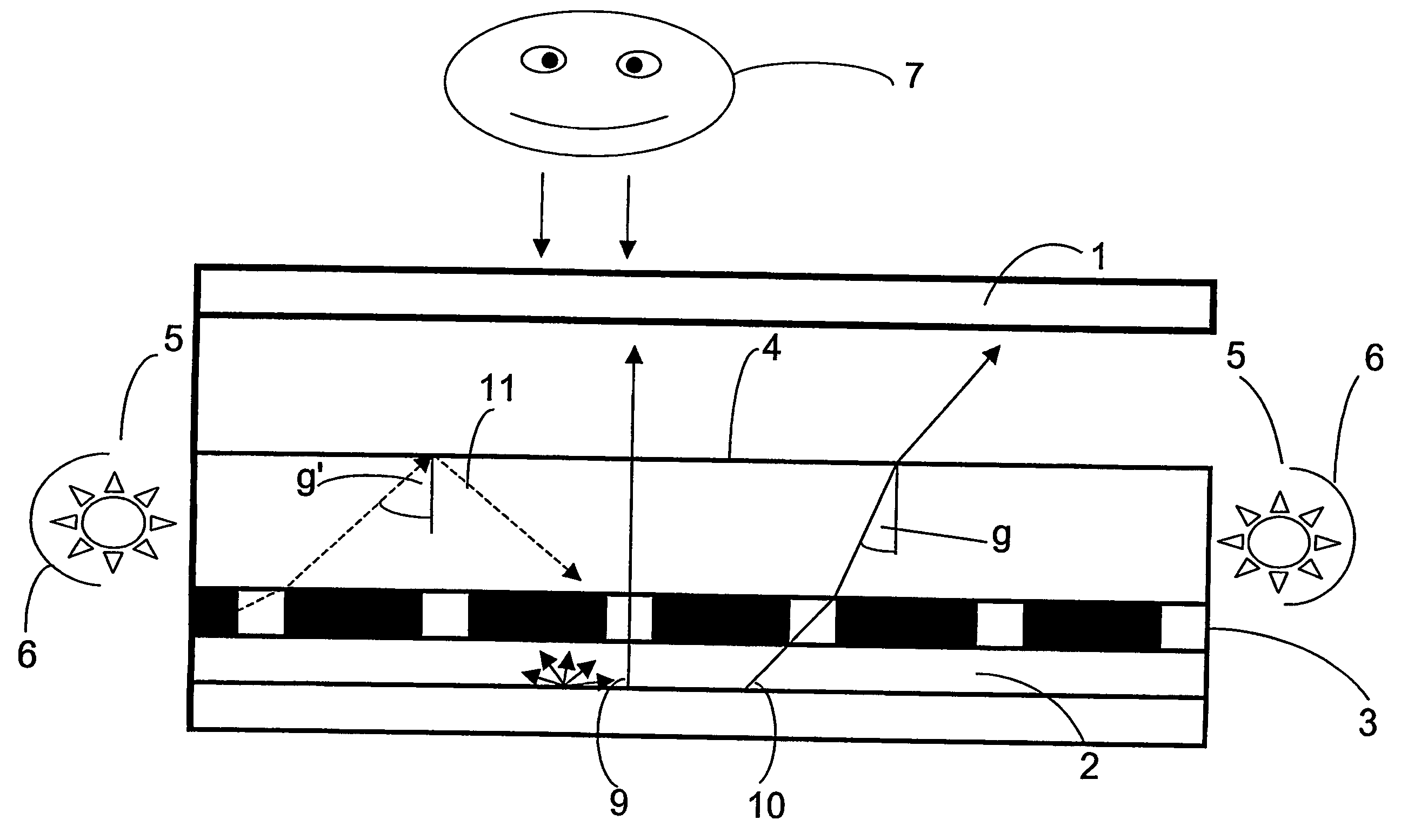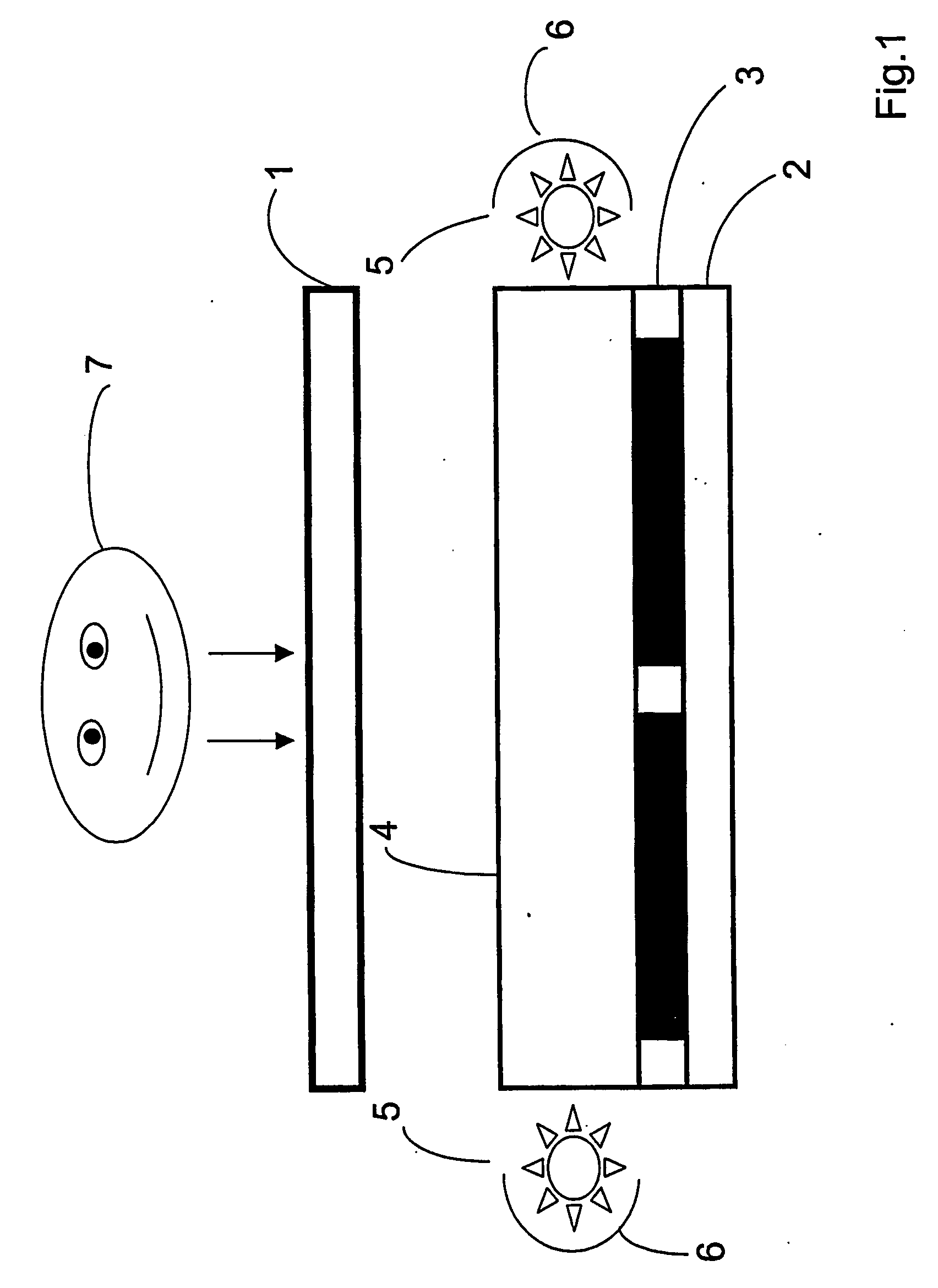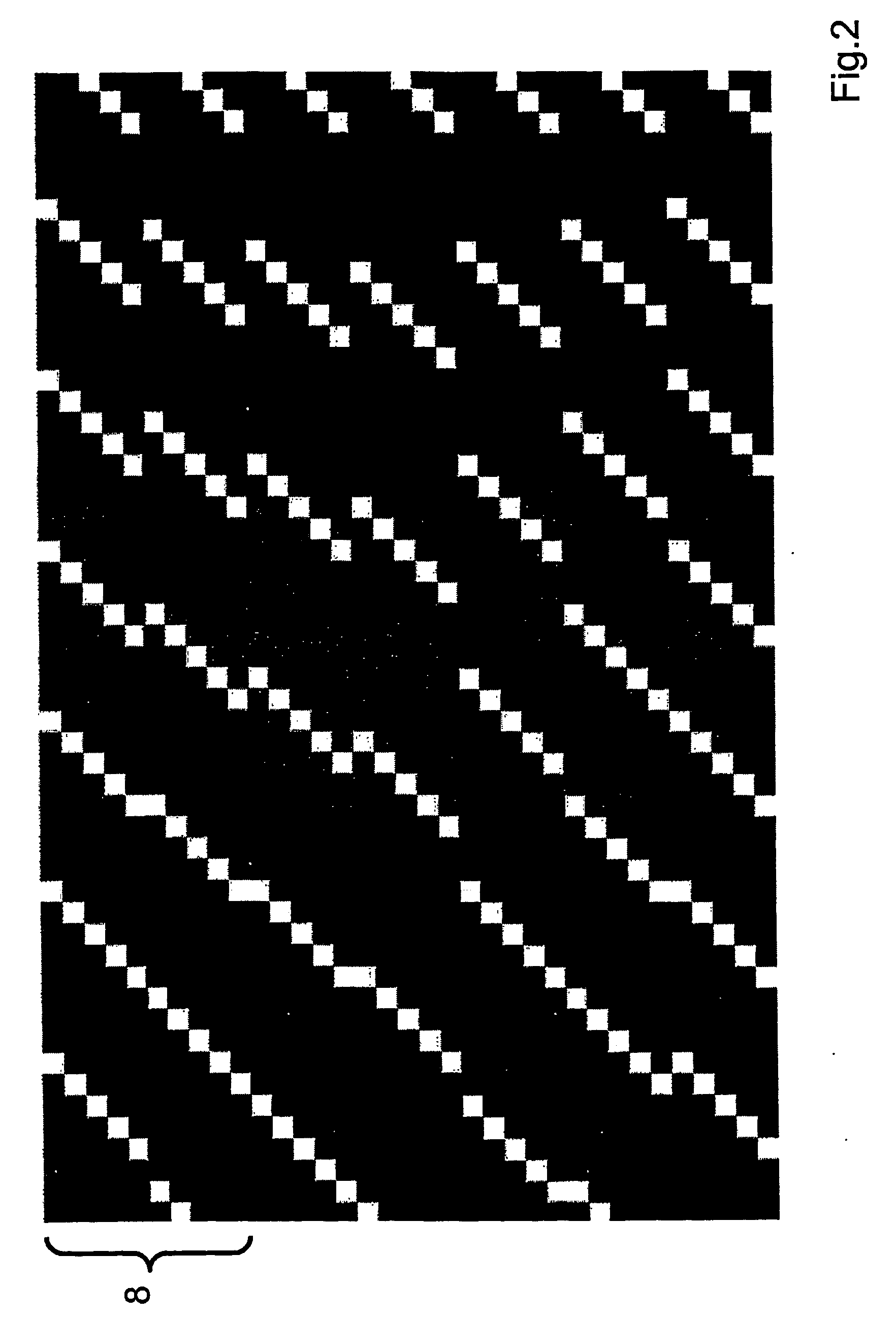Arrangement for two-dimensional or three-dimensional representation
- Summary
- Abstract
- Description
- Claims
- Application Information
AI Technical Summary
Benefits of technology
Problems solved by technology
Method used
Image
Examples
first embodiment
[0070]FIG. 1 shows the general principle of arrangements according to the invention,
[0071]FIG. 2 shows an example of a wavelength filter array for use in the first embodiment of arrangements according to the invention (detail),
[0072]FIG. 3 shows an image combination rule for displaying image information from several (here: nine) views on the image display device (detail),
[0073]FIG. 4 shows an example of a monocular vision, based on the conditions prevailing in FIG. 2 and FIG. 3,
[0074]FIG. 5 shows another example of a wavelength filter array for use in the first embodiment of arrangements according to the invention (detail),
[0075]FIG. 6 shows another image combination rule for displaying image information from several (here: eight) views on the image display device (detail),
[0076]FIG. 7 shows an example of a monocular vision, based on the conditions prevailing in FIG. 5 and FIG. 6,
[0077]FIG. 8 is a schematic presentation of the joint action of the first and second light sources...
PUM
 Login to View More
Login to View More Abstract
Description
Claims
Application Information
 Login to View More
Login to View More - R&D
- Intellectual Property
- Life Sciences
- Materials
- Tech Scout
- Unparalleled Data Quality
- Higher Quality Content
- 60% Fewer Hallucinations
Browse by: Latest US Patents, China's latest patents, Technical Efficacy Thesaurus, Application Domain, Technology Topic, Popular Technical Reports.
© 2025 PatSnap. All rights reserved.Legal|Privacy policy|Modern Slavery Act Transparency Statement|Sitemap|About US| Contact US: help@patsnap.com



